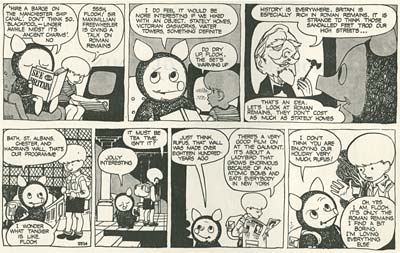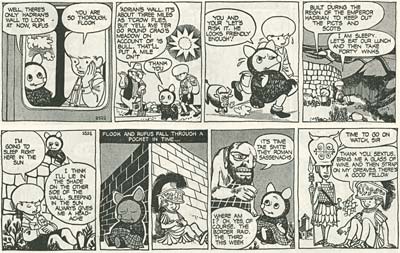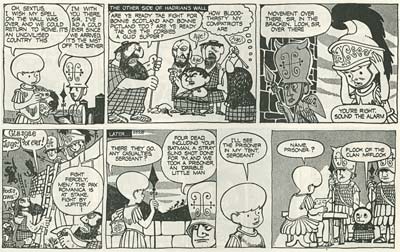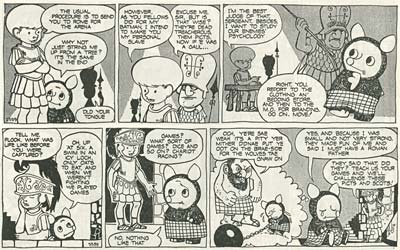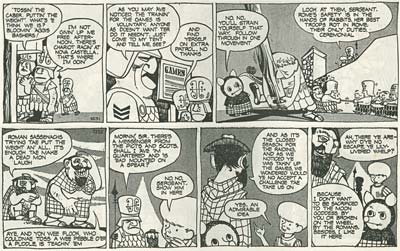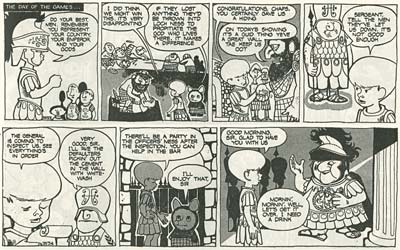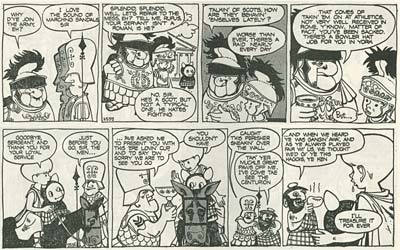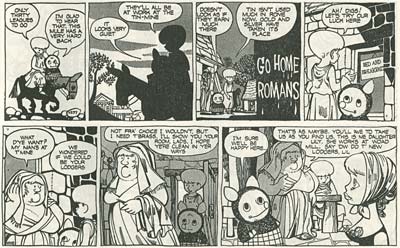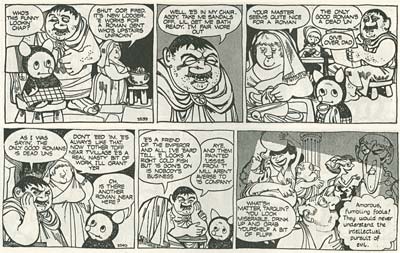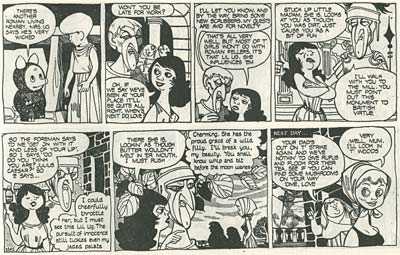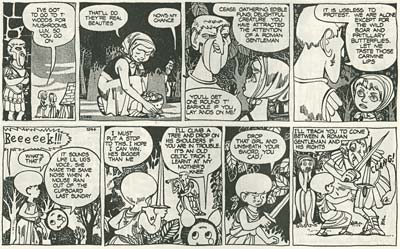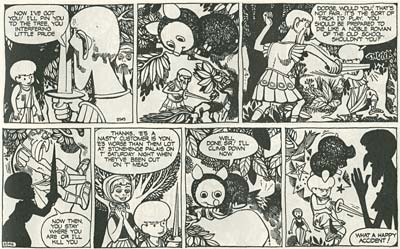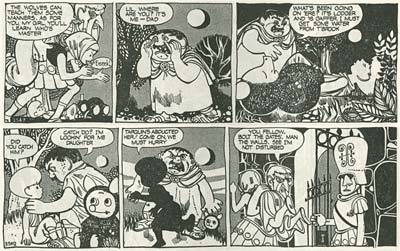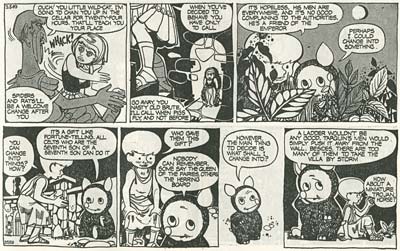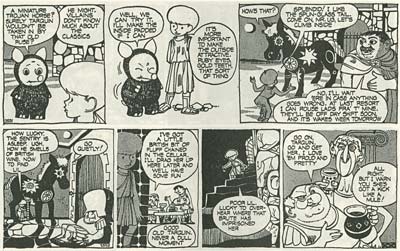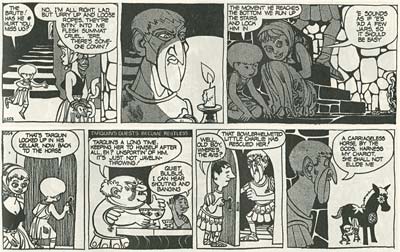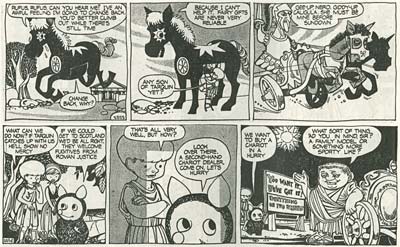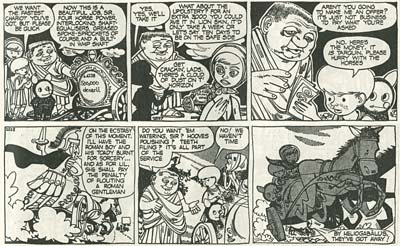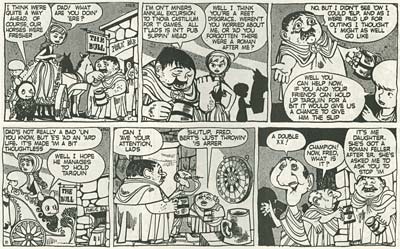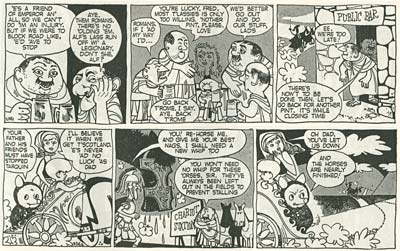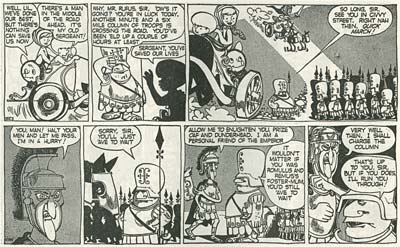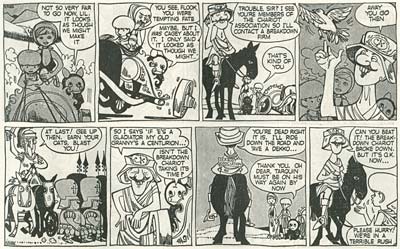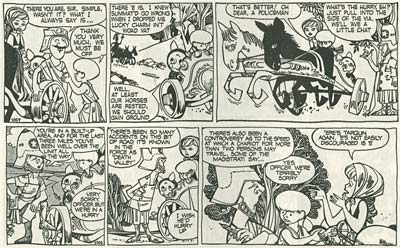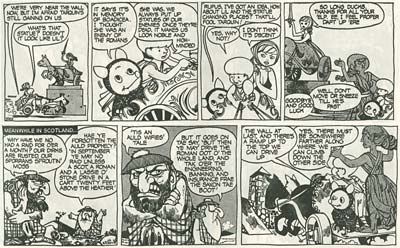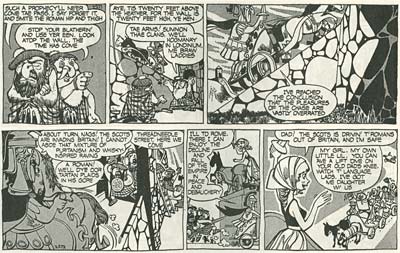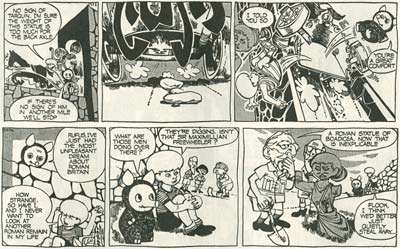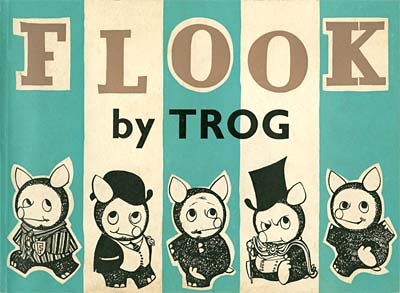
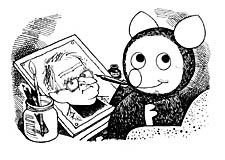
![]() Today, I’m posting a complete story by a comic strip artist whose name won’t be familiar to you unless you grew up in England in the 50s and 60s… he went by the name of "Trog". The nickname, short for "Troglodyte", came from his days hunkered down in air raid shelters during WW2. His real name is Wally Fawkes, and he’s one of those artists who has had two equally noteworthy careers- one as a cartoonist and the other as a Jazz musician.
Today, I’m posting a complete story by a comic strip artist whose name won’t be familiar to you unless you grew up in England in the 50s and 60s… he went by the name of "Trog". The nickname, short for "Troglodyte", came from his days hunkered down in air raid shelters during WW2. His real name is Wally Fawkes, and he’s one of those artists who has had two equally noteworthy careers- one as a cartoonist and the other as a Jazz musician.

![]() Fawkes played clarinet in Humphrey Lyttleton’s jazz band in the 40s and 50s, and was one of the finest Jazz musicians in Britain. But in 1956, he launched a simultaneous career as a cartoonist, which brought him even more fame. “To cartoonists, I was always the one who played jazz. To musicians, I was always the one who drew cartoons.” he once said. But his talent for capturing personality through caricature was his strongest suit. Fellow artist, Nicholas Garland wrote of his political cartoons, "Very few artists can see a likeness the way he can, and catch it so completely. He doesn’t develop a hieroglyph for each politician and then simply reach for it each time it is needed. Every Trog caricature is carefully recrafted." You can see this in the story that follows in this post. Trog doesn’t simply copy the caricatured heads from panel to panel. He’s able to convey the essence of the caricature from a different angle in almost every frame.
Fawkes played clarinet in Humphrey Lyttleton’s jazz band in the 40s and 50s, and was one of the finest Jazz musicians in Britain. But in 1956, he launched a simultaneous career as a cartoonist, which brought him even more fame. “To cartoonists, I was always the one who played jazz. To musicians, I was always the one who drew cartoons.” he once said. But his talent for capturing personality through caricature was his strongest suit. Fellow artist, Nicholas Garland wrote of his political cartoons, "Very few artists can see a likeness the way he can, and catch it so completely. He doesn’t develop a hieroglyph for each politician and then simply reach for it each time it is needed. Every Trog caricature is carefully recrafted." You can see this in the story that follows in this post. Trog doesn’t simply copy the caricatured heads from panel to panel. He’s able to convey the essence of the caricature from a different angle in almost every frame.
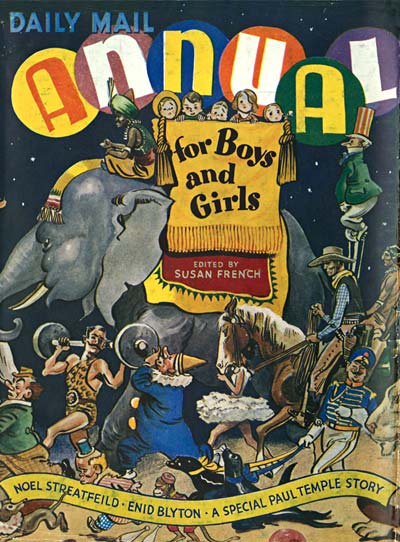
At age 21, Fawkes entered an art contest that was being judged by the Daily Mail cartoonist, Leslie Illingworth. Illingworth was impressed with Fawkes’ work and got the young artist a job at the Daily Mail. Using his nickname, Trog, Fawkes created a comic strip about an imaginary furry creature named "Flook". It became an instant hit and Trog became the toast of the town. At a reception soon after its launch the Daily Mail’s owner, Lady Rothermere asked him, "How is your lovely little furry thing?" Trog replied, "Fine thank you. How is yours?" The cartoonist had to beat a quick retreat after that quip, but admitted that he couldn’t help himself when presented with such a perfect setup.
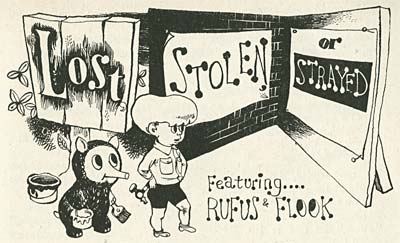
Trog worked with several writers on the strip over the years- Compton Mackenzie, George Melly and Humphrey Lyttleton among others- and the direction of the strip evolved from a light hearted fantasy for children to pointed political humor similar to Walt Kelly’s Pogo. But the stories aren’t the reason that Rufus and Flook are so interesting today- it’s the unique drawings.
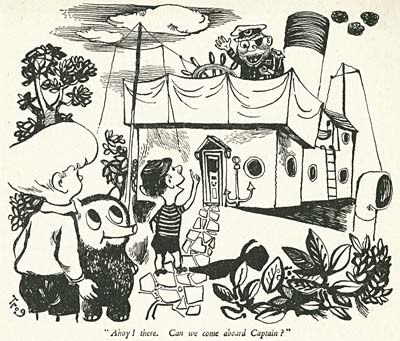
When I first ran across this strip, I admit that I really didn’t know what to think about it. The drawings of the main character Flook were dumbfoundingly ignorant. But the incidental characters were wonderfully observed, sharp caricatures of British society at the time. And the backgrounds often included perfectly thought out compositions with impeccable architectural perspective and beautiful stylization of folliage. At first, this sharp contrast between ignorance and genius can be jarring. But after reading a while, the direct, simplistic looseness of the main characters and the planned and observed structure of the rest of the drawings don’t clash because Trog’s stylish sense of fun makes it all work.
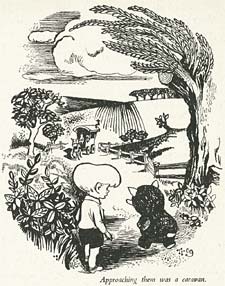
![]() Rufus and Flook continued in the Daily Mail for 40 years, until Trog’s jabs at Margaret Thatcher earned him the scorn of the paper’s conservative editorial staff. He never took censorship personally though. In 1977, when one of Trog’s political cartoons of Cyril Smith was rejected, and he simply shrugged his shoulders and said, “It’s their paper." After leaving the Daily Mail,Trog moved on to the Mirror and the Sunday Telegraph until his failing eyesight forced him to retire from his art career in 2005 and pick up the clarinet again.
Rufus and Flook continued in the Daily Mail for 40 years, until Trog’s jabs at Margaret Thatcher earned him the scorn of the paper’s conservative editorial staff. He never took censorship personally though. In 1977, when one of Trog’s political cartoons of Cyril Smith was rejected, and he simply shrugged his shoulders and said, “It’s their paper." After leaving the Daily Mail,Trog moved on to the Mirror and the Sunday Telegraph until his failing eyesight forced him to retire from his art career in 2005 and pick up the clarinet again.
Personally, I think it’s a shame Fawkes isn’t better known in the US. Perhaps the softspoken, rambling British tone of the stories and the topical nature of the satire doesn’t come across at all any more, but those drawings- wow!
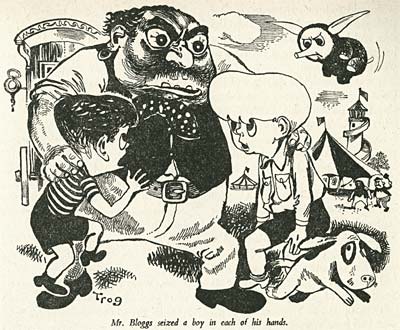
This story from early in the strip’s run comes from an extremely rare paperback compilation, titled simply Flook…
ROMAN’ IN THE GLOAMIN’
Richard Warren has written an interesting article on Flook on his blog. Check it out. Let me know if you would like to see more by Trog in the comments.
Stephen Worth
Director
Animation Resources
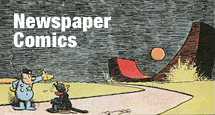
![]()
This posting is part of the online Encyclopedia of Cartooning under the subject heading, Newspaper Comics.















